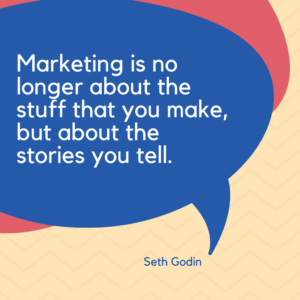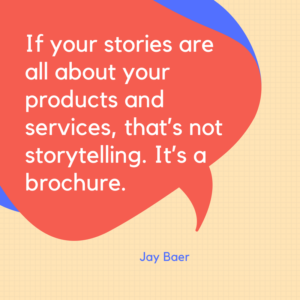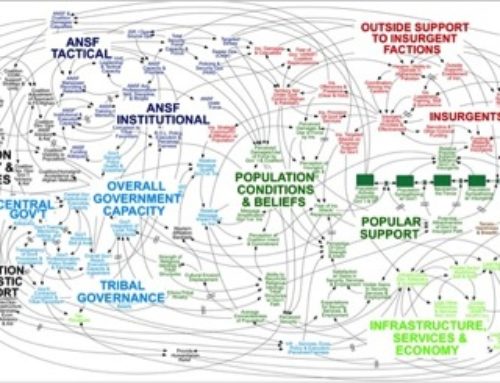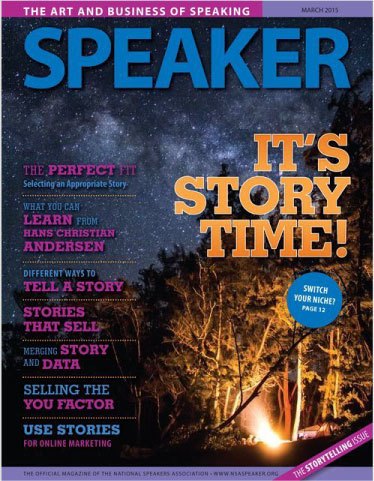Business developers and sales professionals across industries are constantly being questioned about their numbers:
- Are we tracking to goal?
- If not, why not?
- What else can we do to deepen our customer relationships and sell more, faster?

When sales leaders and marketing directors ask me this last question I recommend storytelling.
I recommend storytelling because it’s the one tool that builds trust and credibility with customers—while simultaneously creating desire for your product or service.
Storytelling is a strategic way to answer the questions all customers have about who you are, what your company does and how you’ve helped others.
Additionally, tactical use of storytelling can help you to overcome customer objections without sounding too ‘salesy’.
Your Story
The first story business developers are called upon to tell is one I call: Your Story.
Your Story is more than just a list of your work experiences, or the number of years you’ve been employed at the company you represent. Anyone can find out that information by looking you up on LinkedIn.
What customers are really curious about when they meet you is who you are as a person. What makes you tick and why should they trust you?
One of my clients is a Private Banker.
He sought my help because he was having a hard time getting prospects to commit to a second meeting. When I asked him how he was introducing himself, here’s what he said:
I have 15 plus years of experience working with high net worth individuals, families, endowments and foundations providing investment management services. I also offer a full suite of wealth management, trust and estate services and banking solutions. Plus, I am skilled at implementing portfolio re-optimization for clients within asset allocation targets according to investment strategies with a focus on risk management.
While this may explain what he does, it doesn’t differentiate him from every other Private Banker out there. And it certainly doesn’t build any rapport. I recommended he make his introduction more personal.
Now his story sounds like this:
I’ve been a private banker for over 15 years, but when I was a kid I wanted to be Sherlock Holmes. I loved solving mysteries and problems. It turns out as a private banker I actually get to do that everyday for people like you. I take time to carefully figure out what’s going on in a person’s portfolio and then I’ll investigate how to help them achieve their financial goals as quickly as possible.
He was nervous about the change, but agreed to give it a try. He was thrilled to report that his next five prospects all scheduled second conversations with him.
That’s the power of telling Your Story well.
The Who You’ve Helped Story
Once a client likes and trusts you, then they’ll want some social proof about your product or service. Potential clients are more inclined to buy once they know that you have a demonstrated track record of success with people or companies like them.
This is where customer stories are helpful. The trick is to make sure the story you tell matches the needs of the client you are currently wooing.
An Account Executive I know at Salesforce.com has over 45 customer stories in her back pocket. She understands that if she’s pitching her services to someone in the Insurance sector they are not going to be convinced by an example of a happy customer from the fashion industry.
 When crafting the Who You’ve Helped Story you’ll want to be very specific about what their life was like before you met then, and how much better their life is after using your product or service
When crafting the Who You’ve Helped Story you’ll want to be very specific about what their life was like before you met then, and how much better their life is after using your product or service
Managing Objections
Stories are a powerful way to overcome sales objections too. Follow this step-by-step guide to manage customer objections using stories.
Step One
A common objection is price. First, acknowledge the objection by reframing the conversation away from cost and toward value.
I understand that getting value for your dollar is important to you.
Step Two
Then, tell a story about a time that you personally experienced how important it is to get value for your dollar. Here’s one I’ve used:
I once gave my mother a fruit bowel for her birthday. The first thing she said to me after she opened it was:
It’s lovely. Where did you buy it?
The next time I went to visit she handed me $7.00 dollars. When I asked:
Mom, what’s this for?
She said:
I returned the fruit bowl you gave me to Macy’s and then went and got the exact same one at Bed Bath and Beyond for 20% off.
So believe me when I tell you, I understand value for dollar.
Step Three
After you’ve aligned yourself with the client’s point of view, turn the objection around. Provide an example of a time when you, or someone you know, was willing to spend more than they ordinarily would on an item, or service, because they knew it would enhance their life or business.
When my mother’s 30-year-old dishwasher broke, my brother was able to convince her to renovate the entire kitchen. She’d been complaining about the layout of the appliances for years.
The same woman that took a fruit bowl back to Macy’s for $7.00 was willing to pay $9,000 for a kitchen renovation rather than just buy a new dishwasher for $250.00.
Step Four
Finally, connect the idea of value back to your own product or service. My Mom understood that an investment in a new kitchen would make her life easier everyday for the next 30 years.
Step Five
Ask your client a question about what they initially liked about your product or service.
After all, the point of all this storytelling is to get your customer to tell you their story– so that you can listen and learn.
















